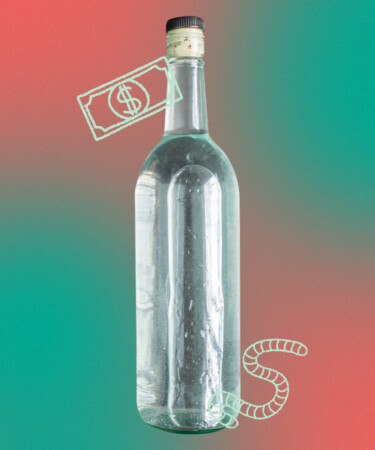In the last few years, mezcal has quickly gone from sitting in the shadows of the bar shelf to being touted by top bartenders as the hipper alternative of tequila. The IWSR Drinks Analysis Report states that mezcal sales grew 25 percent in 2019 and 15 percent in 2020 with no signs of slowing down.
But its rapid growth has led to a seemingly endless slew of mezcal myths and mysteries. After all, when you order mezcal at a bar, do you really know what you’re drinking? Here, we break down a few of the common misconceptions about this spirit to boost up your knowledge.
The Myth: Mezcal Is a Type of Tequila
Actually, tequila is a type of mezcal; any type of spirit derived from a maguey, the agave plant used for alcohol production, is going to be classified with the header of mezcal. Tequila is a distillate just like sotol, pulque, bacanora, raicilla, and, of course, mezcal. Distillates are also region-specific; while there might be some slight overlap, tequila is crafted in five states and mezcal is produced in nine. And while any agave spirit is technically mezcal, the type of agave that’s used is what differentiates the type of spirit. The spirit we know as mezcal can be made with a variety of agaves, up to 30 different kinds, while tequila must be made from Blue Weber agave.
The Myth: There Are Worms in Mezcal
Kind of. Between the two spirits, tequila has a bigger reputation for hosting worms in bottles, but again, this is probably due to consumers misunderstanding the difference between tequila and mezcal. Really, there aren’t any worms in tequila, just mezcal, and the worms are maguey worms, but they are technically larvae of moths that live on the agave plant. The commonly understood story is that entrepreneur Jacobo Lozano Paez began adding them to bottles because, after accidentally finding one in a bottle, he felt it enhanced the spirit’s flavor. Nowadays, if there’s a worm in a mezcal bottle, chances are it’s been put there intentionally. If you do want to indulge in a little worm mythology, try rimming your next glass of mezcal with some sal de gusano.
The Myth: Mezcal Is a Cheaper Alternative to Tequila
If you’ve heard this one, it’s more than likely just a generational story that’s been passed down. Sure, your parents and grandparents may have believed that mezcal was the bottom shelf, inexpensive alternative to tequila, but any quick look in a liquor store today shows that is a myth through and through. Mezcal is consistently more expensive than tequila on today’s market, even when compared to premium tequila brands. But if we know that mezcal can be produced with many types of agave, while tequila uses only one, why would it be pricier?
Mezcal agaves, including the most common one, espadín, can take up to 14 years to mature. Other varieties can go up to 35 years, so acquiring the spirit’s basic ingredients is a time-consuming process. Plus, the work that goes into crafting mezcal is extremely laborious and manual, meaning that most of the spirit being produced is in small batches, which also drives up the price point. Bottom line, you will pay more for mezcal — but it will be worth it.
